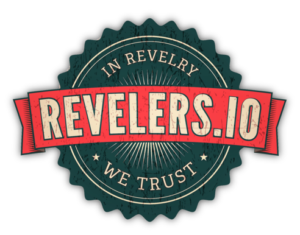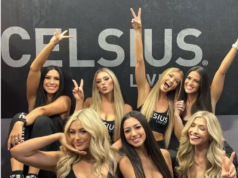Raising Startup Capital through Side-by-Side Equity Crowdfunding (Reg CF) and Regulation D Offerings
With the JOBS Act’s advent in 2012, equity crowdfunding was born. The JOBS Act was designed to revolutionize the way businesses could gain access to early stage capital. Rewards-based crowdfunding campaigns were pushed to the sidelines as startups began offering equity stakes in their businesses in exchange for cash. Most people I speak with outside the crowdfunding community do not realize that equity crowdfunding is legal and an option for their business.
Non-accredited investors can now become players in the startup investment community. This is game-changing for everyone. For entrepreneurs, determining whether, and how, to utilize the new exemption as a tool in their growth strategy is key.
Many entrepreneurs quickly point out, the $1 million cap under Regulation Crowdfunding (Reg CF) is limiting. $1 million may not provide sufficient capital to scale, especially after offering expenses and portal fees are deducted at closing. No longer can equity crowdfunding be written off so quickly. Building a fundraising strategy that incorporates equity crowdfunding AND traditional methods of fundraising is not only possible but being successfully implemented by savvy startups today.
The SEC has implicitly acknowledged this issue. In the SEC’s Final Rules regarding Title III of the JOBS Act (i.e. the new Regulation Crowdfunding exemption), the SEC explained that offerings made in reliance on Regulation Crowdfunding will not be integrated with other exempt offerings properly made by the issuer. The $1 million is thus not an annual fundraising cap for startups and small businesses utilizing the exemption but rather the maximum annual amount that can be raised in reliance on Regulation Crowdfunding alone. Businesses may choose to conduct multiple, even simultaneous, offerings in reliance on various exemptions provided for under the Exchange Act.
How can I overcome the $1 million capital raising limit?Regulation Crowdfunding provides for a maximum annual amount that can be raised of $1 million. Regulation D does not contain the same maximum offering restrictions. In fact, under Regulation D, Rule 506, an unlimited amount of funds can be raised from accredited investors. Thus, side-by-side Regulation Crowdfunding / Regulation D, Rule 506 offerings could be utilized to open up a Series A/B/etc. financing to the crowd.
How do I avoid integration when conducting concurrent Regulation D / Regulation Crowdfunding offerings?The SEC, in the Final Rules for Regulation Crowdfunding, specifically addressed the topic of integration.
In summary, the Final Rules state that an offering made in reliance on Regulation Crowdfunding would not be deemed integrated with another exempt offering made by the same issuer, provided that each offering complies with the requirements of its respective exemption.
The SEC further highlighted a few hypothetical side-by-side offering scenarios and described some of the issues that issuer’s counsel should be concerned with in structuring the side-by-side offerings.
- Reg D, Rule 506(b) & Reg CF – The Final Rules explain that the issuer will have to conclude that purchasers in the Reg D offering were not solicited by means of the offering made in reliance on Reg CF. The SEC suggests that the pre-existing substantive relationship between the issuer and investor (already a requirement under Rule 506(b)) could help the issuer to preserve the exemption, otherwise the (albeit limited) solicitation conducted in connection with the crowdfunding offering may preclude reliance on Rule 506(b).
- Reg D, Rule 506(c) & Reg CF – The Final Rules provide that the issuer, while permitted to generally solicit the terms of the offering under Rule 506(c), could not include in any such general solicitation an advertisement of the terms of the offering made in reliance on Reg CF, unless the advertisement complied with the solicitation and advertising restrictions under the Reg CF statute and final rules.
The Road Ahead: 2017 & The Fix Crowdfunding Act2017 may prove to be an especially promising year for the startup community. A legislative fix addressing many of the shortcomings of the JOBS Act, called the Fix Crowdfunding Act(HR 4855) is on its own path through Capitol Hill.
In its original form, the Fix Crowdfunding Act sponsored by Representative Patrick T. McHenry, included an amendment to permit issuers relying on Regulation Crowdfunding to increase their maximum offering amount under the exemption from $1 million to $5 million.
This amendment would tremendously serve startups and small businesses seeking seed, bridge and Series financing. Those issuers seeking more than $5 million in financing per year could still choose to conduct multiple offerings in reliance on alternative exemptions as discussed above.
Before the bill moved over to the Senate, the portion of the bill that increased the exemption to $5 million was pulled by some short-sighted House Representatives. The incoming Congress should be more open to helping small companies raise the funding they need to grow.
While the Fix Crowdfunding Act remains in congressional limbo, issuers have become inventive in their fundraising strategies. Some issuers, such as Daplie, have chosen to pursue Title III offerings in conjunction with rewards-based crowdfunding campaigns.
Others have begun taking advantage of the SEC’s guidance and have endeavored to raise upwards of $1 million in side-by-side offerings.
Case Study: WolfPrint 3D’s side-by-side Offerings on SeedInvest
Wolfprint 3D is on a mission to help gamers create unique virtual reality avatars. The tech company invented an autonomous photo booth that looks like a white, egg-shaped pod and is called the Luna scanner. The scanner takes images of people’s faces and makes detailed and realistic 3D renderings, and aims to ultimately bring real people into VR. The device can be installed essentially anywhere and currently has locations in New York, Finland, and Estonia. The startup is currently utilizing Title III equity crowdfunding and Regulation D to raise operating capital. The company is raising up to $1,000,000 in its Regulation Crowdfunding offering and $1,500,000 in its simultaneous Regulation D, Rule 506(c) offering through the sale of convertible notes with a valuation cap of $4.5M on the SeedInvest platform here.
Crowdfund Insider, on November 14, 2016, released an article discussing WolfPrint 3Ds side-by-side Regulation Crowdfunding and Regulation D offerings. The article outlined SeedInvest’s perspective on its involvement in the first internet-based offering of its kind. Ryan Feit, the portal’s CEO and a proponent of this fundraising strategy stated to CrowdfundInsider:
“Side-by-side rounds allow companies to get the both of best worlds. Companies can raise up to $1 million from non-accredited investors under Regulation CF while raising a few million more simultaneously from accredited investors through Regulation D.” – Ryan Feit, CEO, SeedInvest.
When probed about his expectations for the future, Feit continued, “Unless the cap on Regulation CF is raised by the Fix Crowdfunding Act, we will continue to help many companies utilize side-by-side rounds.”
Businesses like Wolfprint 3D, and industry leaders like SeedInvest, serve to inspire the equity crowdfunding community at large. Developing, and testing, innovative new plans to expand our businesses and practices. Boldly creating strategies that can be successfully implemented for ourselves and our clients.





